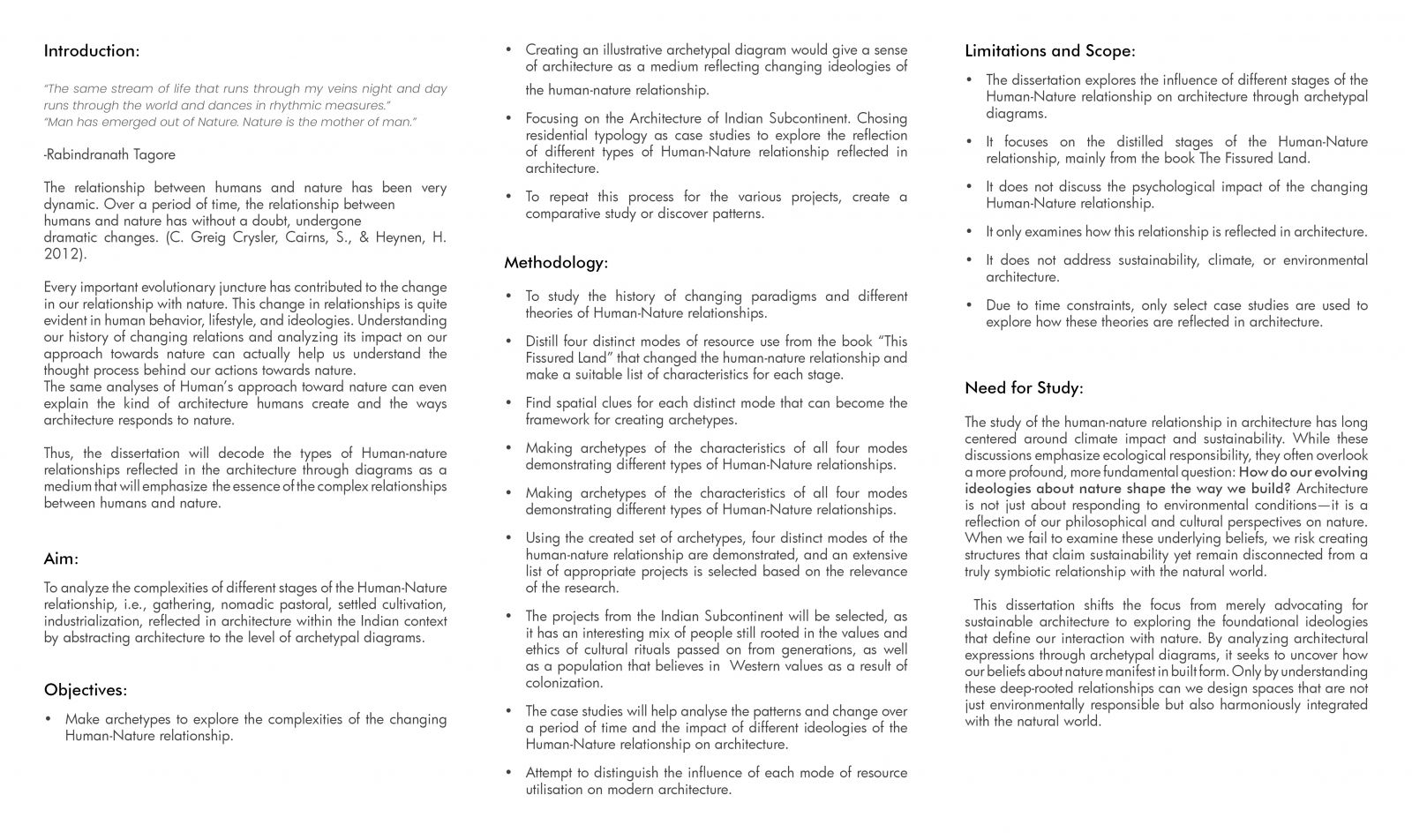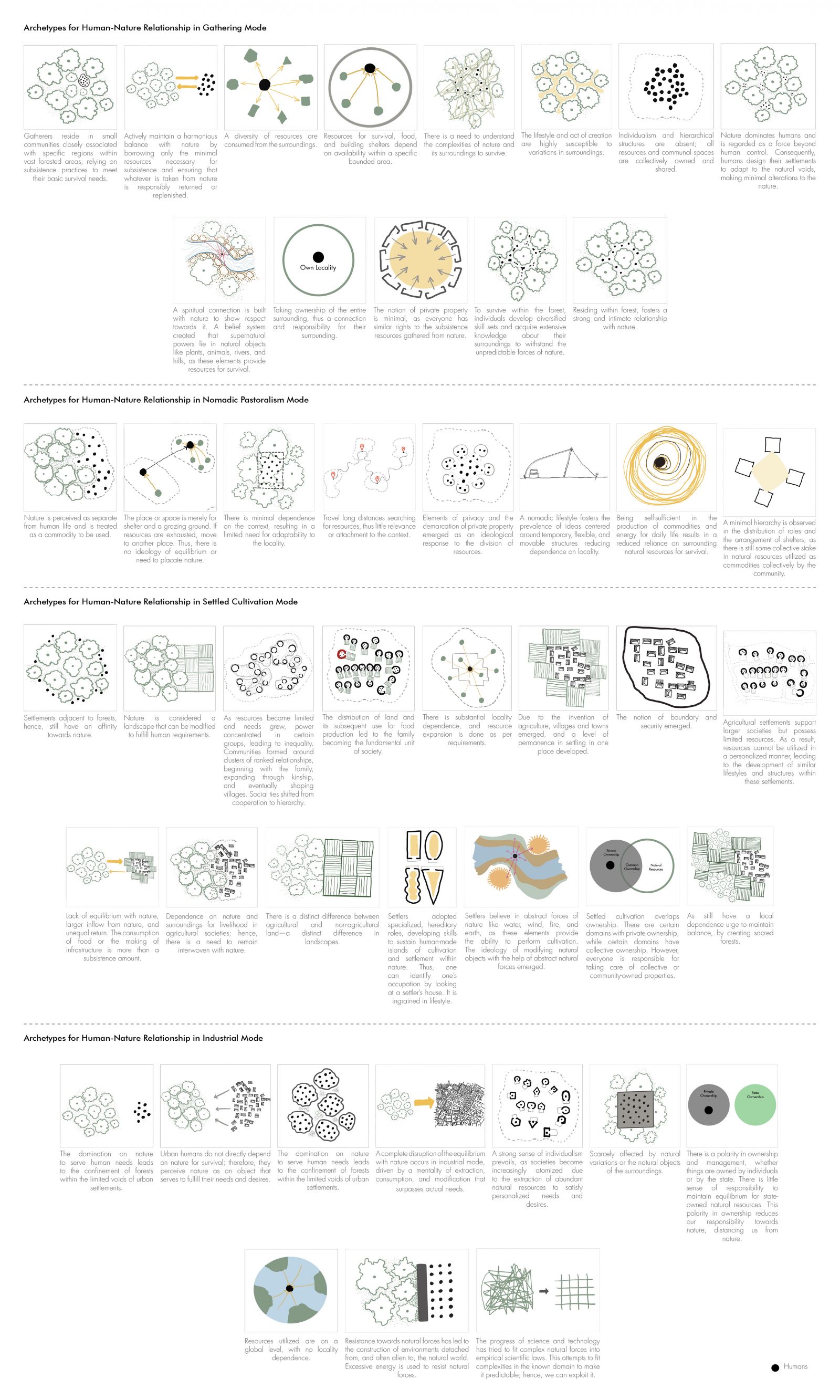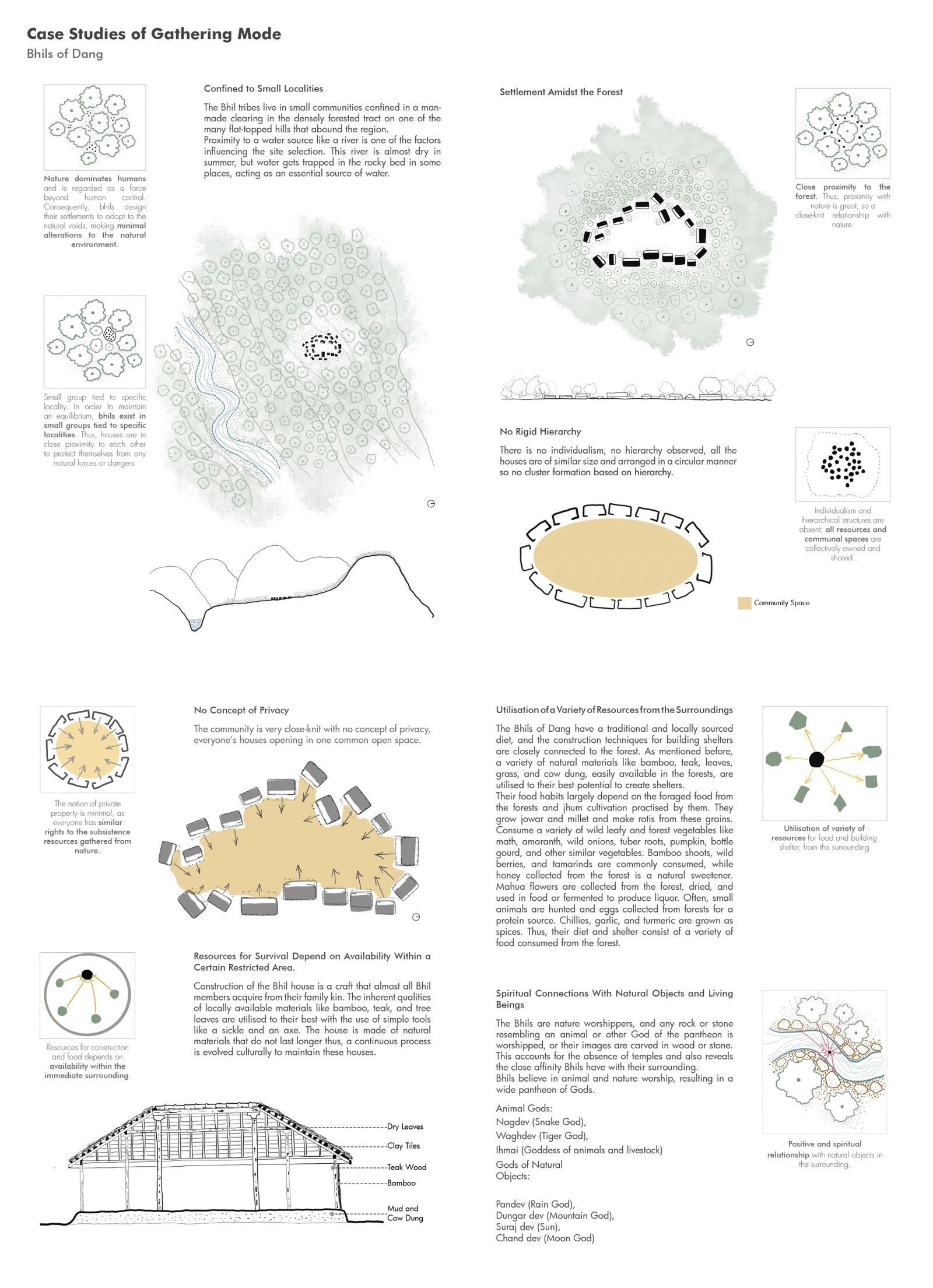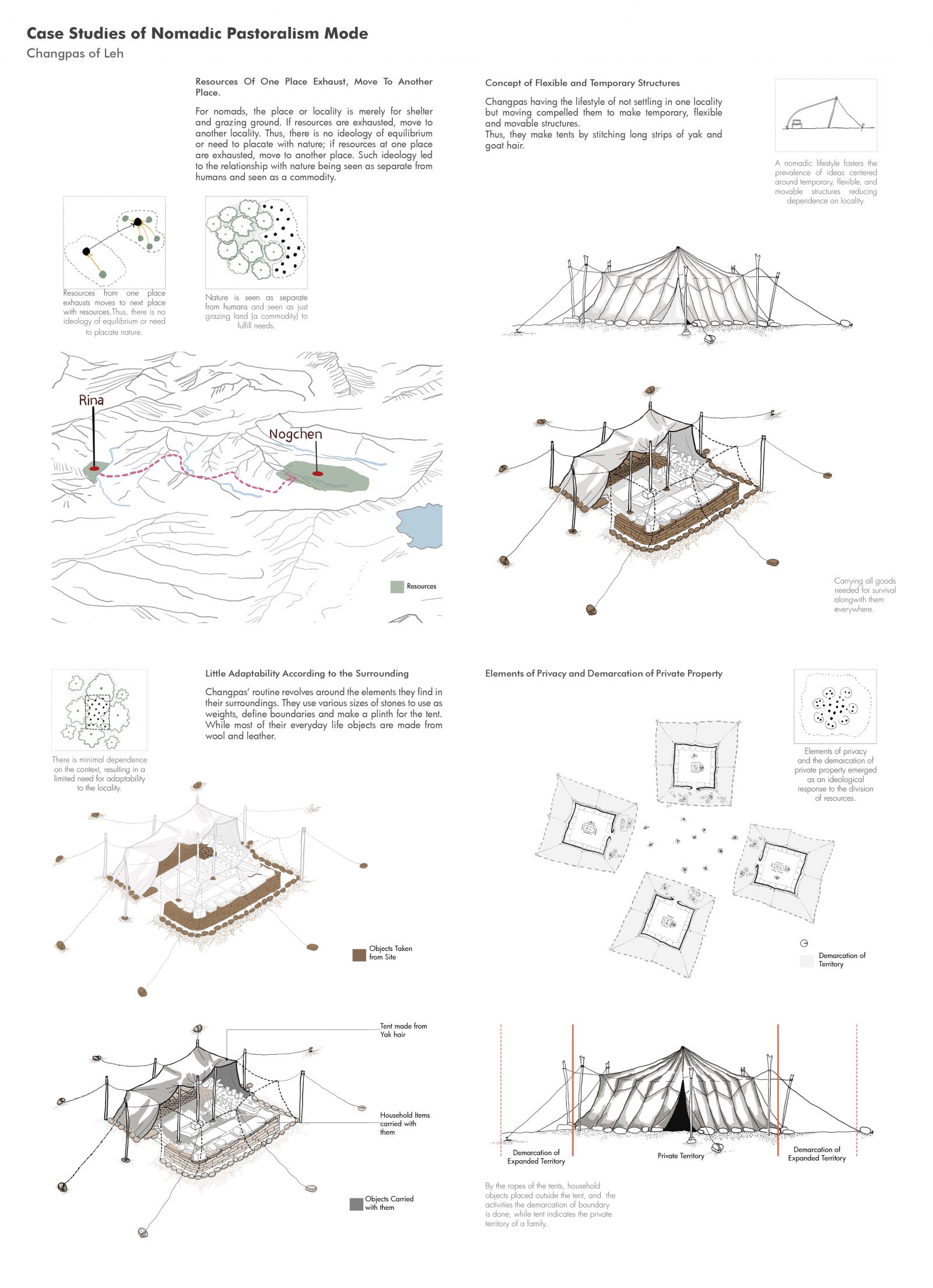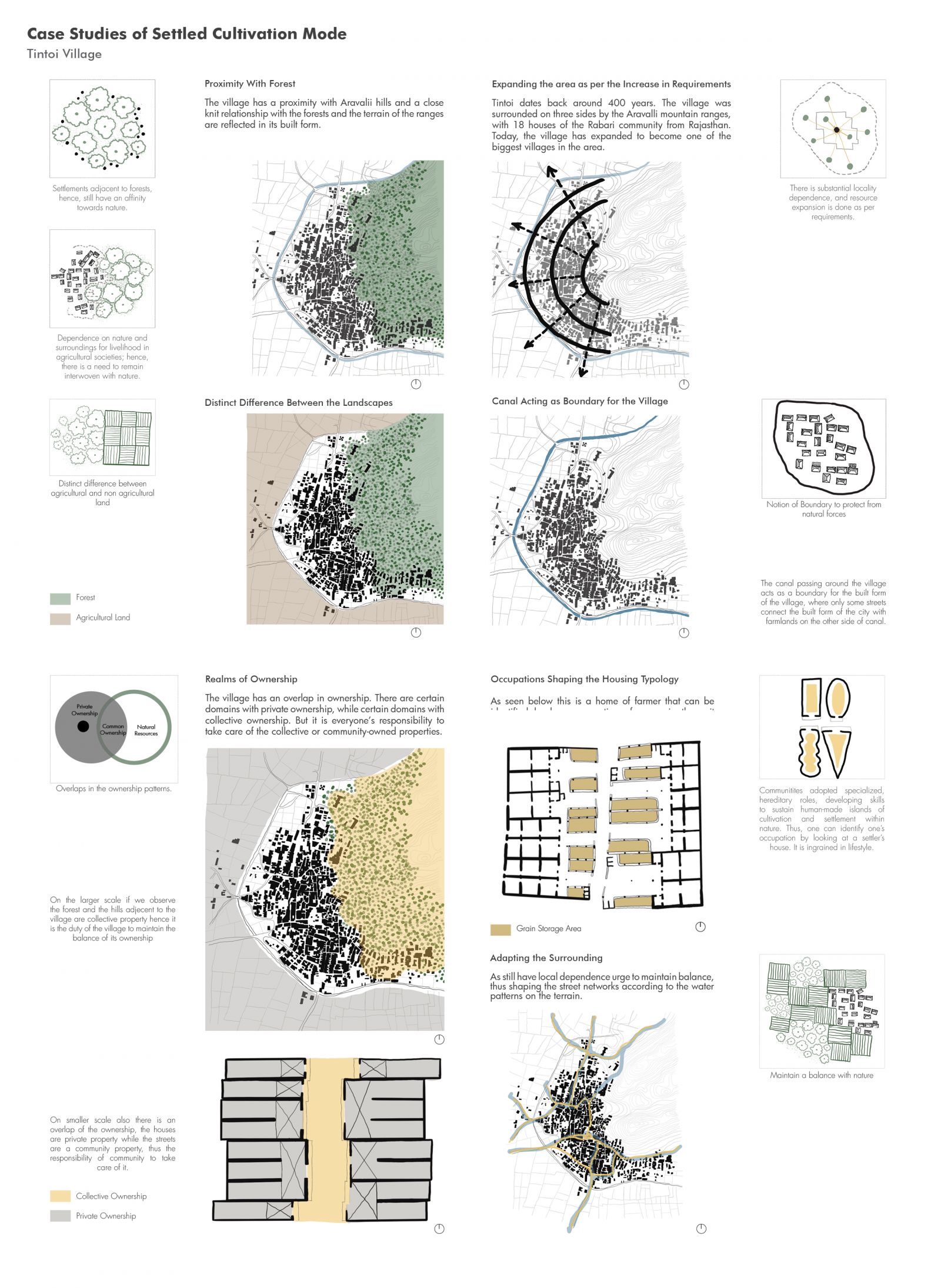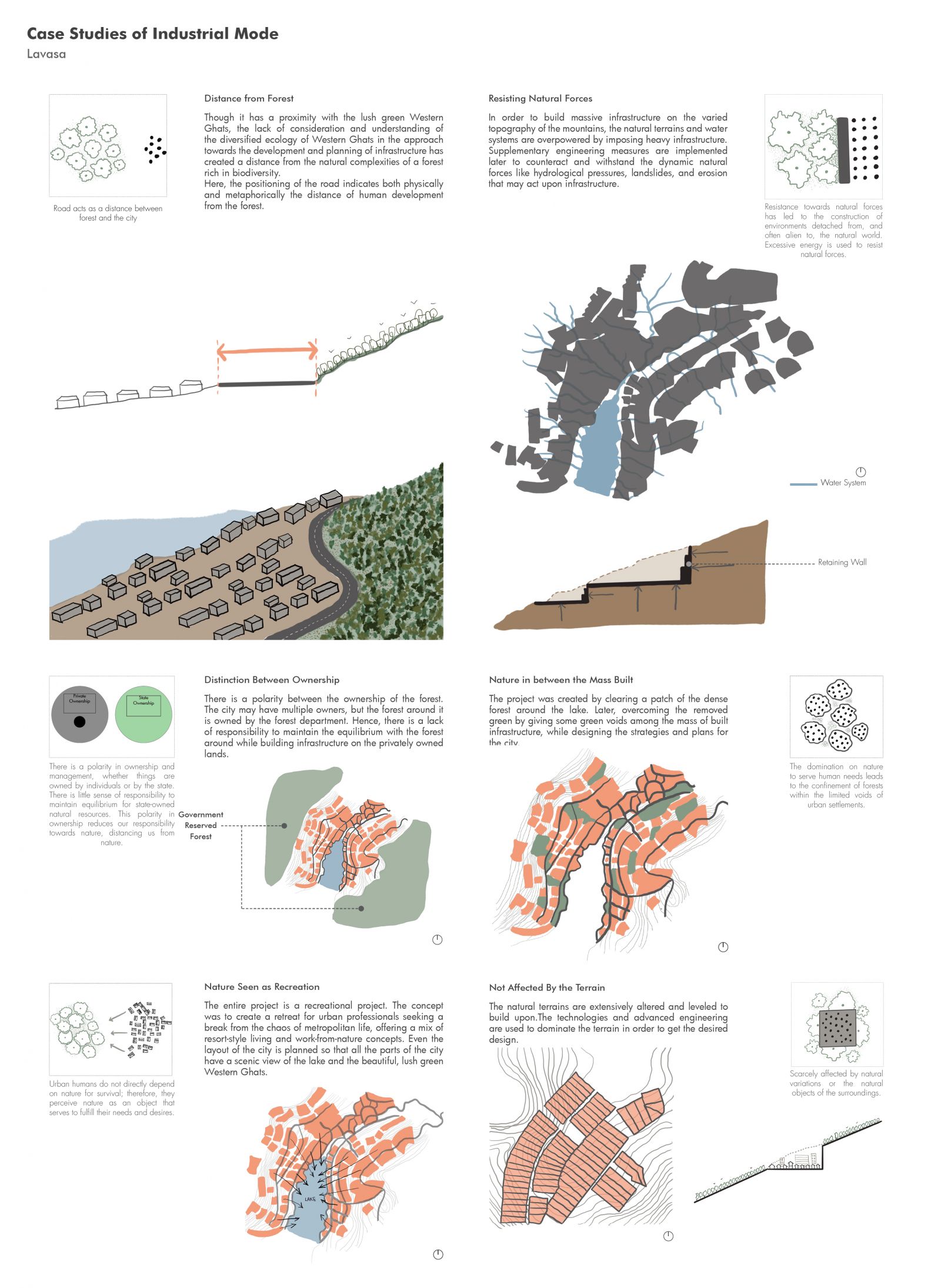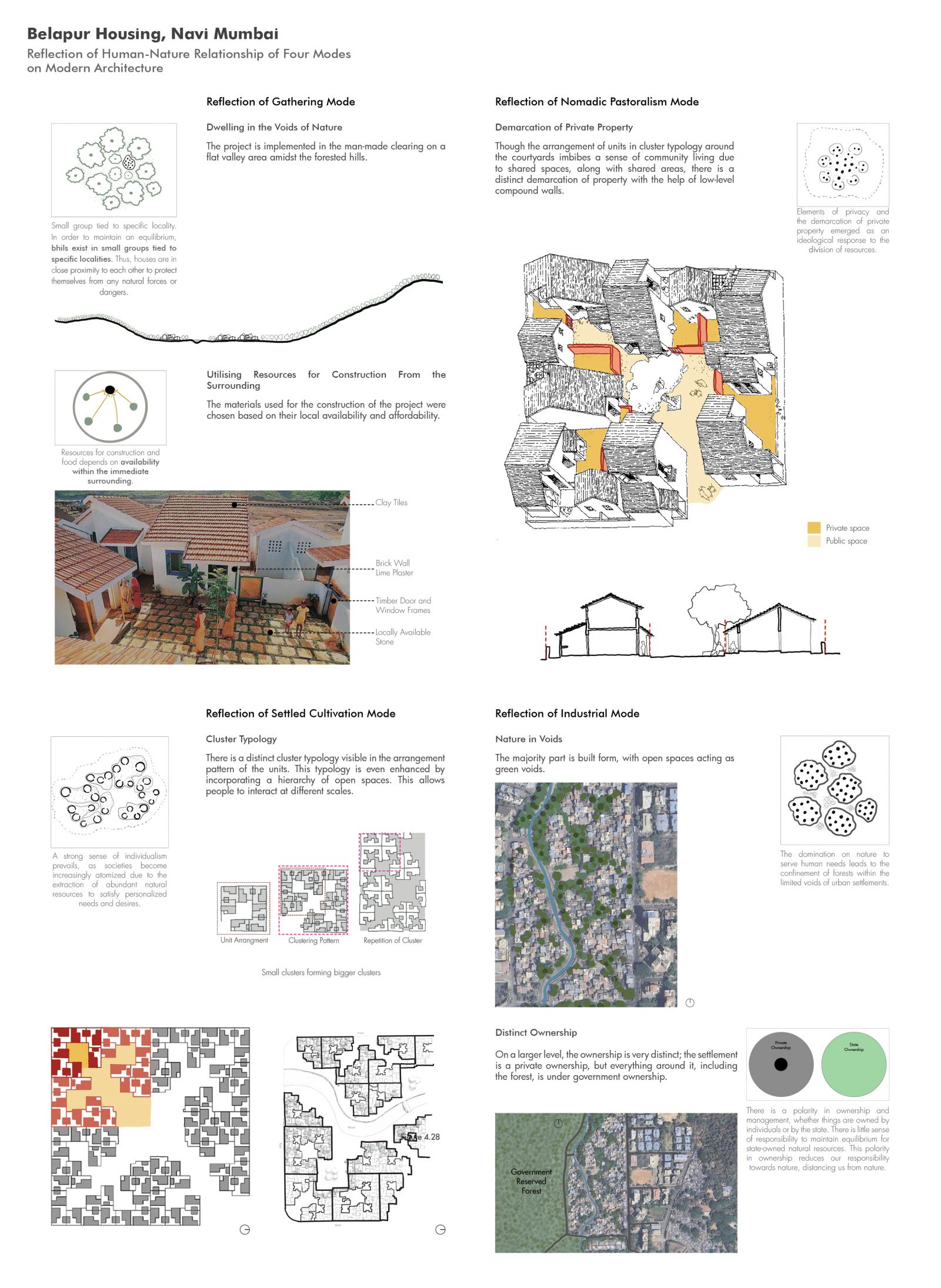Your browser is out-of-date!
For a richer surfing experience on our website, please update your browser. Update my browser now!
For a richer surfing experience on our website, please update your browser. Update my browser now!
The relationship between humans and nature has evolved dramatically over time, shifting from coexistence to domination. Historically, four stages of resource use—gathering, nomadic pastoralism, settled cultivation, and industrialization—mark this changing dynamic, each redefining how humans interact with nature. Today, perspectives vary between seeing humans as separate from nature or as integral to it. Architecture, as a cultural expression, mirrors these ideologies. As Giedion noted, monuments symbolize collective societal values. This dissertation uses architecture and archetypal diagrams to analyze how evolving human-nature ideologies are embedded in built forms, revealing the depth and complexity of this dynamic relationship through spatial expression.
